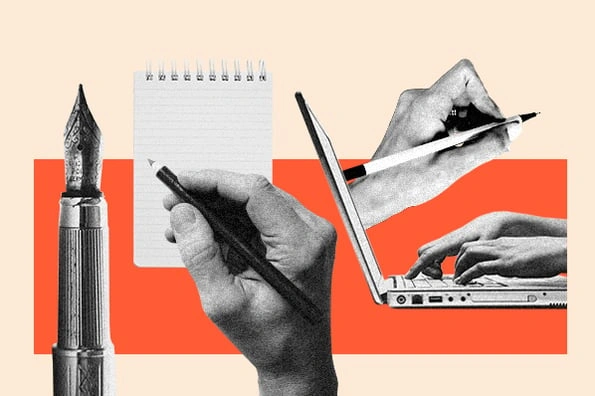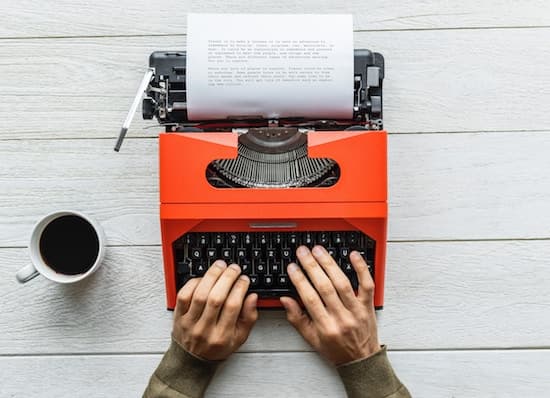Editing copy boils down to two key things: recognizing weaknesses and knowing how to fix them. It’s a critical part of the writing process and yet, one that’s all too often overlooked. After all, if you don’t know that there’s an issue to begin with, how can you fix it?

That's why, if you struggle with editing, you’re going to love this article ...
Because by the end of it, you’ll be armed with 10 powerful, uber-specific editing actions that’ll make your copy more addictive, engaging, and compelling than it was before you got to work revising it.
Whether you’re writing a landing page, a blog article, an email, or a web page, making the following changes will have a profound impact on your readers. Namely, these edits will make them more likely to do what you want them to do -- and that’s what great copy is all about.
10 Simple Edits That'll Instantly Improve Any Piece of Writing
A mesmerized reader, for all intents and purposes, is an engaged prospect -- and that’s exactly what marketers want. After all, engaged prospects are more likely to keep reading your copy, which makes them more likely to reach a call-to-action that’s irresistible.
Are you ready to edit your copy like a pro? Here’s what you gotta do ...
1) Open with questions that get the reader to say “yes.”
Inertia, be it mental or physical, is a powerful force. In other words, whether it’s a long-term relationship or a boulder rolling down a hill, the longer it’s in motion the harder inertia makes it to stop. That’s why writers love using it, especially in their introductions.
The idea is that the longer you can get the reader to say “yes” to your honest, accurate statements, the more likely they are to keep saying “yes” and, ultimately, harmonize with your message. Why? Because they’ll feel like you understand them; like you know exactly what they’re going through.
Make them say “yes” enough and they’ll get the feeling that your product or service can help solve their problem. Hopefully, it can.
2) Double tap the “Enter” button every 1-3 sentences.
As you know, hitting “Enter” or “Return” twice leaves a space between paragraphs. But just because that space is void of words, does not mean it doesn’t serve a purpose.
Just as photographers and designers use negative space to create a focal point, writers can use white space to create emphasis and draw attention to something that’s important.
White space also makes copy appear less intimidating and more readable. It structures the message in a polished, elegant frame that invites readers to dive in.
3) Bold your key benefits.
Bolding the benefits will quickly point readers to the information you absolutely need them to know. In fact, in-text formatting of any kind -- italicizing, underlining, capitalizing, back-linking -- will help you capture and maintain a reader’s attention. That happens because our minds are hardwired to notice change.
Imagine watching a play go from a monologue to a dialogue in the same scene. Or a movie fade to a perfectly white screen. It gets your attention, right?
Something new, thinks your subconscious. Something that stands out. Let’s focus.
4) Isolate important information using bullet points.
As Kurt Vonnegut once wrote, “Pity the readers.” That means go easy on them when you write. Consider that they have to focus on and instantly make sense of every word and every little mark you put in front of them. And they have to do it all online, where attention is at a premium. So help them out.
Bullets and numbered lists will:
- Organize your text, making it more scannable and digestible.
- Highlight your key points and other important bits of information.
- Draw the most attention after your headline and subheads, making them an ideal vessel for benefits.
(Click here to learn 8 quick tips for writing bullet points people actually want to read.)
5) Start sentences with “Imagine,” “Remember,” or “Picture this …”
These words are triggers. They let readers know you’re about to tell them a story, jog their memory, or paint them a picture (the way I do here). People love that stuff. Always have. According to producer Steven Moffat, “We’re all stories, in the end.”
So think of it this way: The word “Imagine” at the beginning of a sentence or paragraph serves the same purpose as the title sequence of your favorite Netflix show. It signals to you that you're about to experience something you enjoy. It yields an anticipatory sensation. It creates suspense. And that’ll keep you engaged in just about any situation, whether you’re watching TV or reading an email.
6) Incorporate the word “because” as often as possible.
“Because” is another trigger word. It lets people know they’re about to hear a justification -- a reason why -- which, according to renowned researcher and author, Dr. Robert Cialdini, is great at getting people to nod their heads:
"A well-known principle of human behavior says that when we ask someone to do us a favor we will be more successful if we provide a reason. People simply like to have reasons for what they do," writes Cialdini in his bestselling book, Influence.
Why? Because science proved it.
(Note: The word “because” has the same effect on paper as it does in-person.)
7) Convert sentences to active voice.
Nothing kills writing quite like the overuse of passive voice. A simple way to combat this? Convert sentences to active voice.
Active voice means the subject of each sentence is doing the action rather than receiving it. The latter would be passive voice. For example:
- Active: Usain Bolt broke the world record.
- Passive: The world record was broken by Usain Bolt.
See how much stronger and more confident the active voice is? Its counterpart is comparatively weak and deflated. Passive voice is just, kinda … meh. It can make you sound like you’re playing a round of Clue. You can do better.
To passive-proof your text, start by doing a CTRL-F for the word “by.” That’ll quickly highlight sentences in which the subject may be receiving the action rather than doing it. Or you can let Hemingway Editor find them for you.
8) Rewrite everything in the second person.
Second person is the most engaging narrative mode because it’s the most personal. Pronouns like “you,” “your,” and “yours” will help the reader see themselves in your copy and, consequently, in the story your product or service is trying to tell.
Great writing speaks to readers on an intimate level. It connects with them, which is incredibly difficult to do. But writing in the second person makes it easier.
9) Count your adverbs and then cut that number in half.
Or, better yet, quarter it. In his memoir, On Writing, Stephen King wrote, “The road to hell is paved with adverbs.” Why so harsh? Because adverbs are very, very good at weakening your writing. See?
If you want your writing to grab people by the collar, replace that mediocre adverb-verb combo with a single punchy, potent verb. For example, instead of writing “she’s very mad” you could write “she’s irate.” Or instead of writing “adverbs are very, very good at weakening your writing” you can write “adverbs sabotage compelling sentences.”
10) Amend your call-to-action to be a call-to-value.
Before you publish that landing page or send out that email, you should double-check your call-to-action (you know, the essential end-piece that tells your reader what to do next). Make sure it’s clear and concise, bold and visible, urgent and compelling. Most importantly, make sure it communicates benefits (i.e., the value that awaits those who do what you’re asking).
For example, if you’re a travel agent, don’t let your copy read “Call now for a free quote” or something equally typical and uninspiring. Instead, drive them to take action with a sneak peak: “Call now and let the anticipation begin” or “Click today and be gone tomorrow.”
Let your prospects see themselves in the action and they’ll be more likely to take it.
Feeling Prepared?
Editing isn’t easy. It takes guts and character to amend creative work. But remember, you’re doing it for a reason: to make your writing stronger and clearer. In the end, making these edits will take time and effort, but they’ll yield more email opens, more shares, and more conversions.
And believe me, it’ll be worth it.
What are your best editing tips? Share them with us in the comments section below.









![How Long Should Blog Posts Be in 2021? [New Data]](https://www.hubspot.com/hubfs/how-long-blog-posts.webp)

